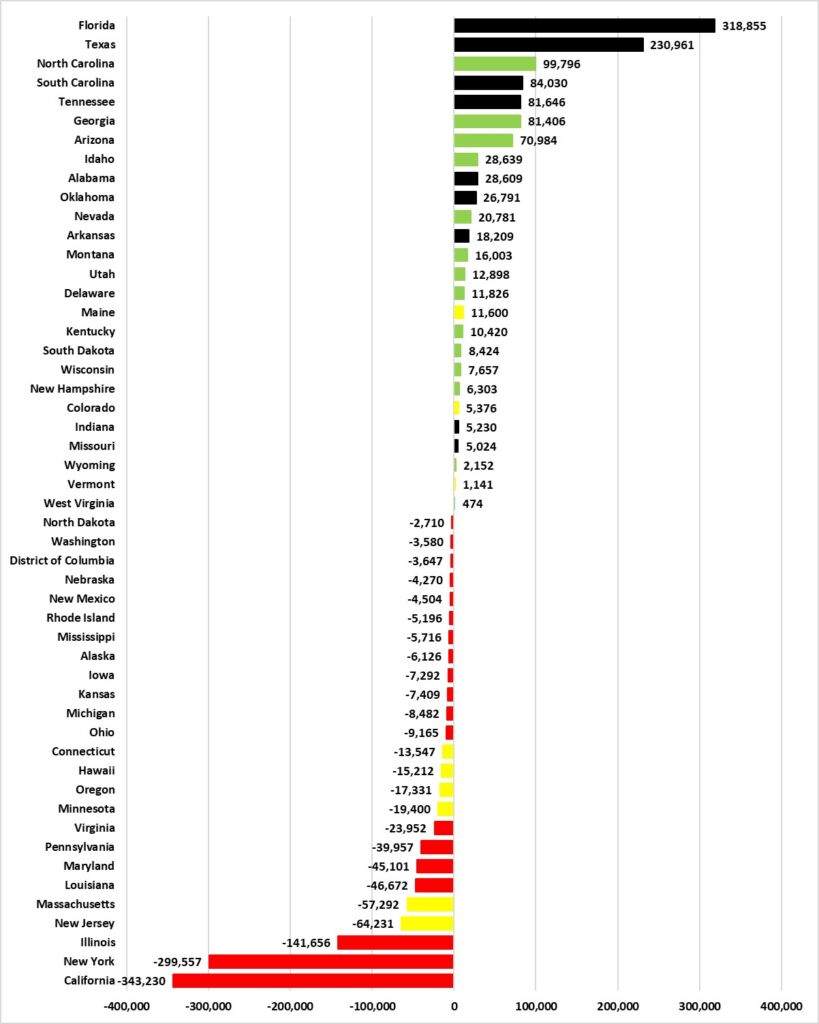Another day, another crazy CNBC ranking of the states
Yesterday I wrote about how CNBC’s much heralded rankings of “America’s Top States for Business” actually told you very little that was useful about which American states really are top for business. But CNBC wasn’t done cranking out crazy ranking of American states:
CNBC starts by noting labor shortages and goes on to argue:
…an increasing number of states see this as an opening. They are pitching their quality of life as a reason companies should locate there.
″(A) quality of life that inspires people to build their business, families and lives here,” one state economic development website promises.
“Meet our people. See our work ethic. Experience our good life,” says another.
But only a handful of states are truly delivering on their promises.
Life, Health and Inclusion is among the ten categories of competitiveness in CNBC’s annual America’s Top States for Business study, and under this year’s methodology, it is increasingly important in a state’s overall ranking. [Emphasis added]
We use hard data to measure factors including crime, environmental quality, health care and childcare in every state. We consider anti-discrimination laws and worker protections. And with surveys showing a significant percentage of women factoring reproductive rights into where they are willing to live, state abortion laws are a new metric in 2023.
Rankings vs Data
According to CNBC, the top ten best states to live and work in in 2023 are, in ascending order, Connecticut, Massachusetts, Colorado, Washington, Oregon, Hawaii, Minnesota, New Jersey, Maine, and Vermont.
If these are such top states to live and work in, we should expect to see Americans flocking to live in them.
We do not. As Figure 1 shows, of the top ten states to live and work in as identified by CNBC (highlighted in yellow), seven of them lost residents to other parts of the United States in 2021-2022 — the most recent year for which we have data. If we look at net domestic migration for CNBC’s top ten states to live and work in as a whole, we see a net loss of 172,476 residents. Minnesota contributed 19,400 towards that loss.
If that isn’t weird enough, according to CNBC, the top ten worst states to live and work in in 2023 are, in descending order, Florida, Arkansas, Tennessee, Indiana, Missouri, Alabama, South Carolina, Louisiana, Oklahoma, and Texas. Of these top ten worst states to live and work in as identified by CNBC (highlighted in black on Figure 1), nine of them gained residents from other parts of the United States in 2021-2022. The ten states together saw a net gain of 752,683 residents, as Figure 2 shows.
Figure 1: Net domestic migration, 2021-2022

Figure 2: Net domestic migration, 2021-2022, of CNBCs best and worst states to live and work in, 2023

There is a statistically significant relationship between a state’s net domestic migration from 2021 to 2022 and its ranking on CNBC’s 2023 measure of Life, Health & Inclusion, but it is negative: for each step up on CNBC’s rankings of the best states to live and work in, a state is expect to lose another 2,796 residents to other parts of the United States.
Fantasy vs Facts
If CNBC’s ranking of best and worst states actually run counter to what we see in the data, that is because it isn’t meant to actually capture which states are the best and worst. It is meant to measure which states are most and least “liberal.” That is how, even while they are hemorrhaging residents, CNBC can write:
A handful of states stand out as America’s best places to live and work in 2023, with some blue states, in particular, rising at the expense of states where culture wars are raging.
You will note, also, the assumption that culture wars only “rage” in Red states. They only call it a war when you fight back.
But if this is an index of a state’s liberalism, the concerning thing for liberals ought to be that the more liberal a state becomes — according to this ranking — the more people skedaddle, according to Census Bureau data.
Data is rarely kind to the American left. The reason these rankings are created and trumpeted so loudly is that they give “progressives” something other than data to point to. Faced with relatively sluggish economies and population loss, they can point to rankings like CNBC’s for comfort. The real world, meanwhile, moves on.